Today’s Butterfly Profile: Skippers (Family Hesperioidea)
Views: 1914

Skippers are the wallflowers of butterfly world. Many people have seen a drab brown or black skipper in their butterfly gardens and assumed they were being visited by a moth in broad daylight, rather than an actual butterfly. But, no, these visitors are butterflies; they just aren’t always recognized as such.
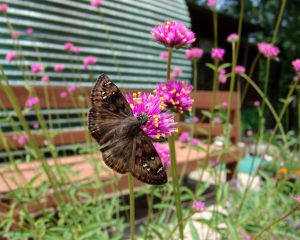
Many people mistake skippers like this Horace’s Duskywing for moths.
Characteristics
Skippers are a butterfly family, named Hesperioidea scientifically, with a large number of individual species. Compared to other butterfly families, such as swallowtails (Papilionidae), skippers are comparatively small, and they aren’t very colorful, either, so they’re often inconspicuous. They are named skippers because of their habit of flitting quickly and directly (skipping) from flower to flower, place to place. They dart, rather than glide or wander, and their wings beat too quickly to follow. Swallowtails will ride the wind, but you’re unlikely to see a skipper doing the same.
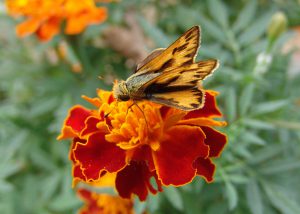
Skippers are small and often inconspicuous. This Fiery Skipper, however, is very beautiful when viewed up close.
Skippers’ bodies are fairly large in proportion to their wings. Swallowtails and Brushfoot butterflies, for example, have long, colorful wings that we traditionally associate with butterflies. Skippers are stubby in comparison, and they have large eyes. Some skippers are very hard to differentiate from moths, but they don’t have fuzzy feelers on their antennae, and, on many species, the clubs at the end of their antennae have a backward hook.
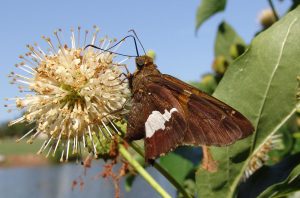
It’s easy to see the backward hook on the antennae of this Silver-Spotted Skipper.
Where to find them
Arizona and Texas have the most skipper species; 270 are found in North America. Compare that to about 40 swallowtail species, and you start to understand how common skippers probably are in your garden. I consistently see more skippers than any other butterfly family in my own gardens.
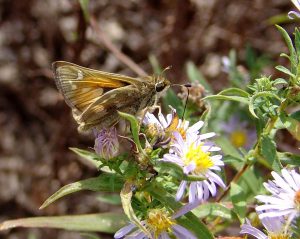
Sachem Skippers are the most common butterfly I see in my gardens.
Here’s the good thing: I find them beautiful. They’re generally small, and they often don’t catch the eye. But if you look at them closely, they have gorgeous iridescence and lovely patterns with spots and dashes. Many grass skippers shine golden when they catch the light.
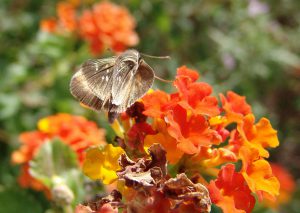
Even the drabbest skippers will shine with iridescence when they catch the light. This is a Eufala Skipper.
I enjoy watching the Cloudywings, Scallopwings, and Duskywings nectar shade flowers or poke about the undersides of plants. They provide movement and excitement in my shady areas. I’ve spent hours trying to figure out if I have Northern Cloudywings, Southern Cloudywings, or Confused Cloudywings. (It turns out I have all three.) I revel in seeing the clouds of grass skippers take flight as I move among my pots of gomphrena fireworks. Many of you will fondly recognize a Silver-Spotted Skipper, even if you didn’t know its name.
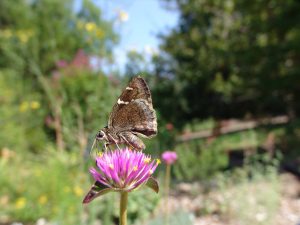
Cloudywing.
I understand why other butterflies get more love than skippers. But next time you’re in your garden, take a closer look at your visitors. I bet skippers are among the butterflies you find. Start paying attention to them, and you might grow fond of them, too.
Meet Leslie Miller
Leslie Ann Miller shares 3.5 acres in rural Oklahoma with birds, butterflies and wide variety of animals. She is currently transforming her yard with plantings…
Leslie's Recent Posts
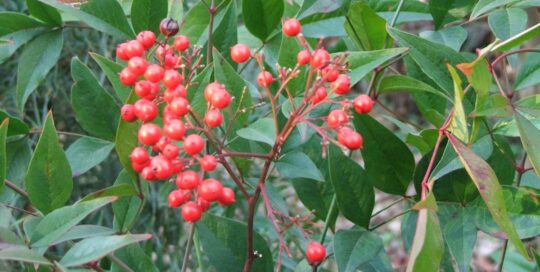
Nandina Berries Are Potentially Harmful to Birds: A Warning






